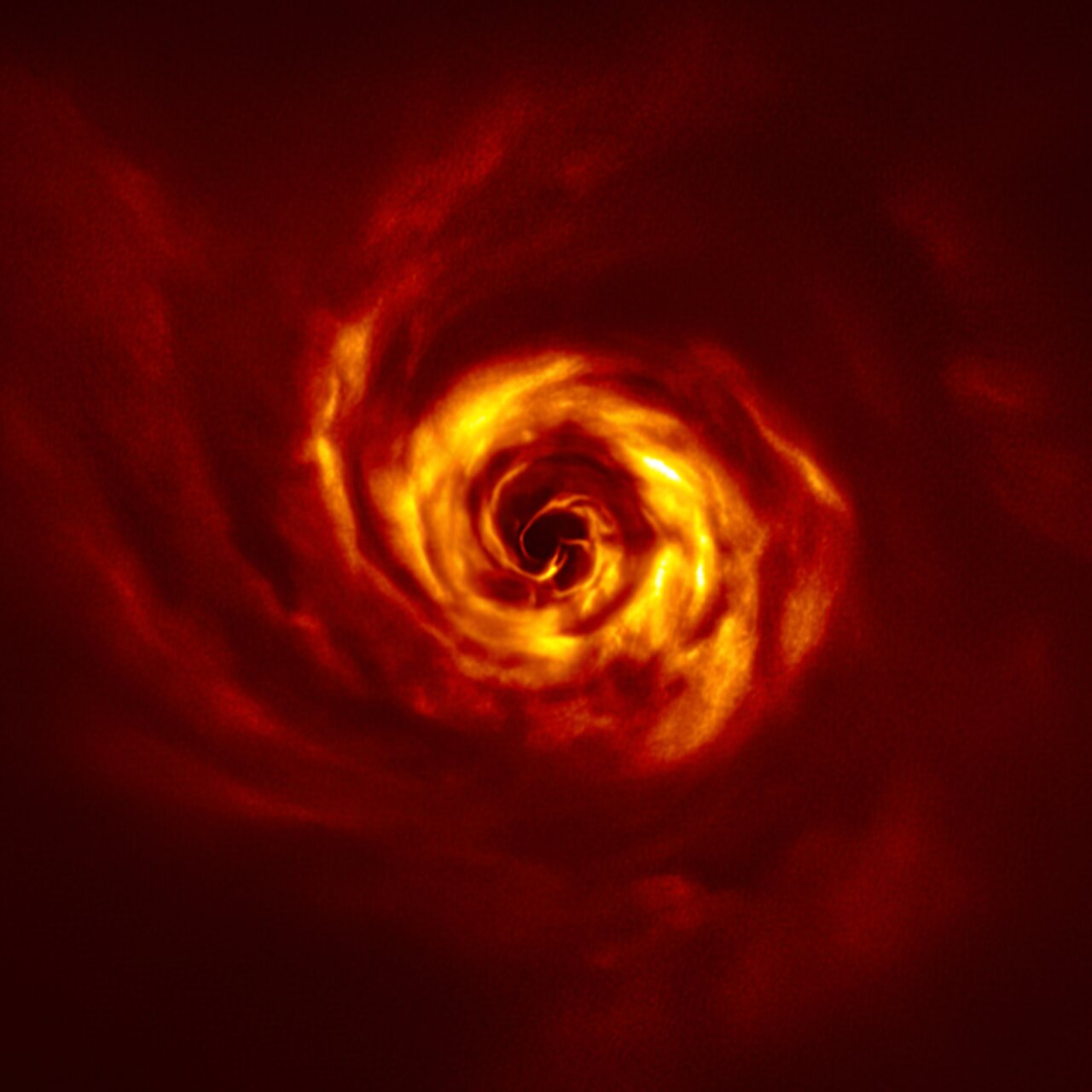Baby exoplanet spotted growing around distant star (photo)
Planets' origin stories apparently come with a twist.
The European Southern Observatory's Very Large Telescope (VLT) in Chile has captured an image of a planet being born around the young star AB Aurigae, which lies 520 light-years from Earth in the constellation Auriga (The Charioteer).
Like previous AB Aurigae images taken by the Atacama Large Millimeter/submillimeter Array (ALMA), this new photo shows spiral arms forming in the thick disk of dust and gas surrounding the star. These spirals are evidence of newly forming worlds, which churn up protoplanetary disks, scientists have said.
Related: Amazing space views by ESO's Very Large Telescope (photos)
But the VLT view, which was obtained using an instrument called SPHERE (short for "Spectro-Polarimetric High-contrast Exoplanet Research"), adds something different and more detailed: a twist in those spiral arms. This twist likely pinpoints the spot where the exoplanet is taking shape, researchers report in a new study describing the observations.
"The twist is expected from some theoretical models of planet formation," study co-author Anne Dutrey, of the Astrophysics Laboratory of Bordeaux in France, said in a statement.
"It corresponds to the connection of two spirals — one winding inwards of the planet's orbit, the other expanding outwards — which join at the planet location," Dutrey said. "They allow gas and dust from the disk to accrete onto the forming planet and make it grow."
Breaking space news, the latest updates on rocket launches, skywatching events and more!
The baby planet is forming relatively far from AB Aurigae — about 30 times the Earth-sun distance, or roughly equivalent to Neptune's distance from our sun, researchers said.
The new VLT observations could end up shedding considerable light on planet formation, which remains murky territory for astronomers.
"Thousands of exoplanets have been identified so far, but little is known about how they form," study lead author Anthony Boccaletti, of the Observatoire de Paris at the Université Paris Sciences et Lettres in France, said in the same statement. "We need to observe very young systems to really capture the moment when planets form."
The new study was published online today (May 20) in the journal Astronomy & Astrophysics.
- It's a beautiful baby exoplanet! Historic photo is 1st view of alien world being born
- Astronomers spot hundreds of baby stars and planet-forming disks
- How did the solar system form?
Mike Wall is the author of "Out There" (Grand Central Publishing, 2018; illustrated by Karl Tate), a book about the search for alien life. Follow him on Twitter @michaeldwall. Follow us on Twitter @Spacedotcom or Facebook.
OFFER: Save 45% on 'All About Space' 'How it Works' and 'All About History'!
For a limited time, you can take out a digital subscription to any of our best-selling science magazines for just $2.38 per month, or 45% off the standard price for the first three months.

Michael Wall is a Senior Space Writer with Space.com and joined the team in 2010. He primarily covers exoplanets, spaceflight and military space, but has been known to dabble in the space art beat. His book about the search for alien life, "Out There," was published on Nov. 13, 2018. Before becoming a science writer, Michael worked as a herpetologist and wildlife biologist. He has a Ph.D. in evolutionary biology from the University of Sydney, Australia, a bachelor's degree from the University of Arizona, and a graduate certificate in science writing from the University of California, Santa Cruz. To find out what his latest project is, you can follow Michael on Twitter.


